Carbon Fiber Handlebar 911
Emergency Roadside Repair in 3 Easy Steps
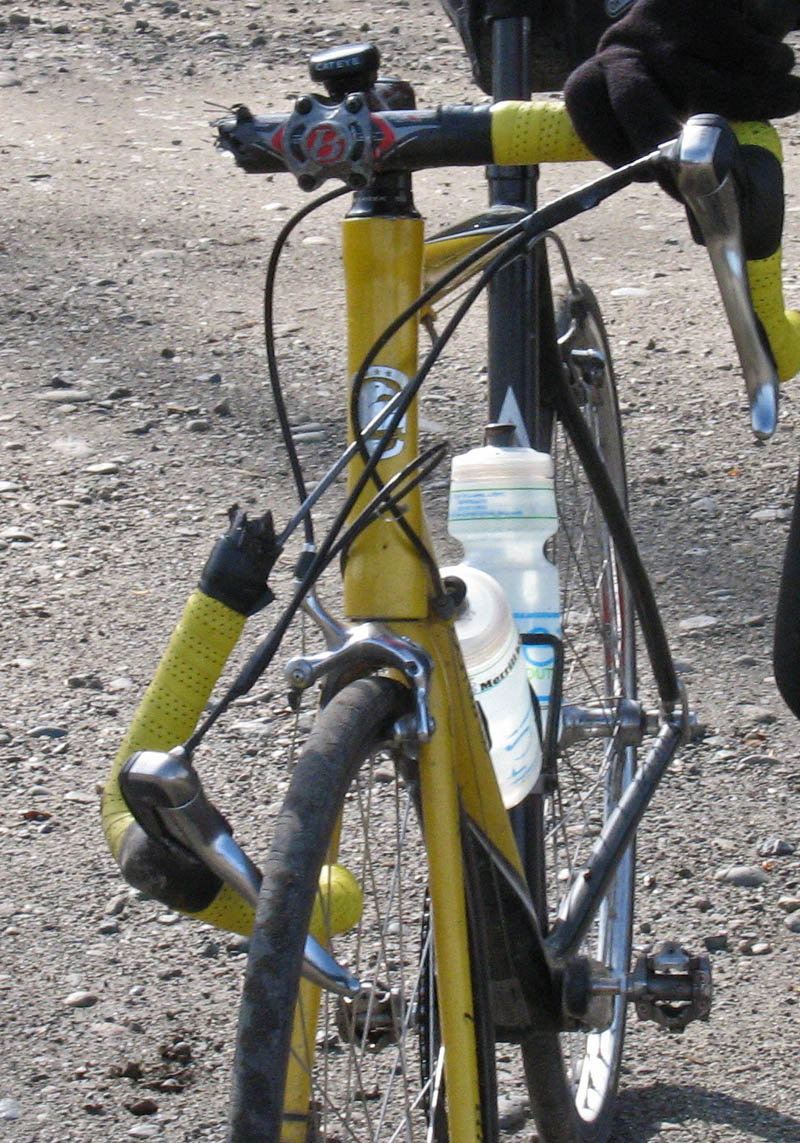
Materials required:
• wooden stick
• steel strap
• big rock
• 5 mm Allen wrench (optional)
Time required: 25 minutes.
On a spring-time ride in the Cascades, we took a side road from Sultan to Gold Bar in the Skykomish River Valley. Our destination was Index, and we were looking forward to the fabulous Reiter Road that runs high on the hillsides above the valley between Gold Bar and Index. Presently, the road turned to gravel, and then we found ourselves in the railyard at Gold Bar. Suddenly, Ryan crashed.
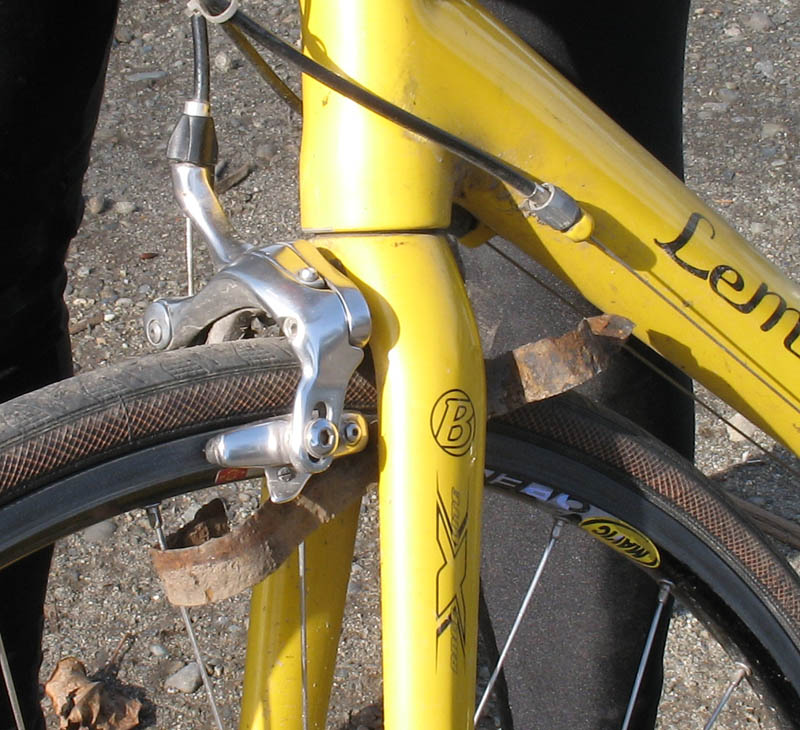
His front wheel had picked up a steel strap, which locked up the wheel. Ryan fell over at low speed. He was relatively unhurt, but his carbon-fiber handlebars broke in half when they impacted the ground. (Here is a photo of Ryan on his carbon-fiber bike.)
We were 80 km (50 miles) from home, so our repair had to be durable enough to get back to Seattle safely.
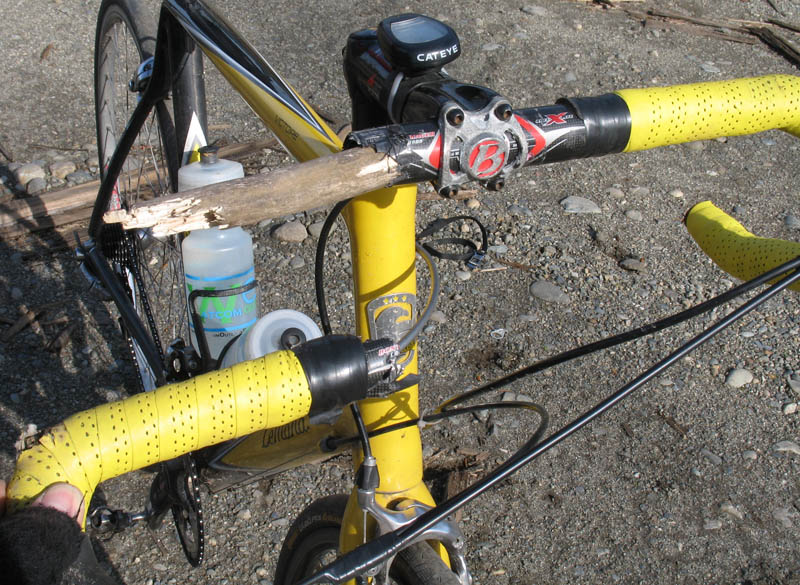
Step 1: We found a stick of suitable diameter and jammed it into the handlebars. We had to remove the rear brake, because the cable was too short to get the broken end onto the stick. Ryan’s handlebars had a groove for the brake cable, so the cross-section wasn’t round, and the stick was not a perfect fit. The stick served only to preserve the alignment; it was not strong enough to support the weight of the rider on the handlebars.
Step 2: We decided to splint the handlebars like a broken bone. Fortunately, a railyard is full of useful materials. A steel strap was perfect for the job.
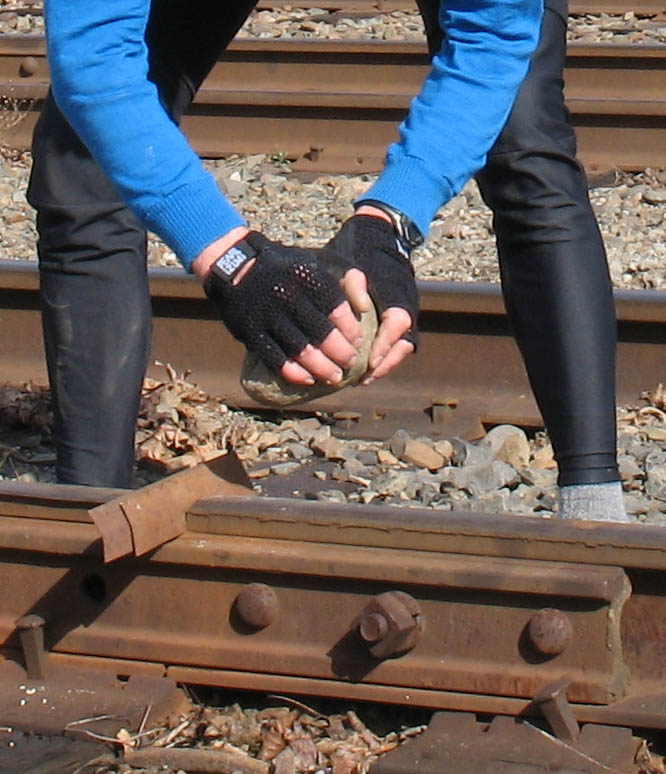
A big rock served as a hammer to form the strap into an “L” profile, giving it more strength. The gap between two rails served as a vise. (This was a siding, there was no danger of being run over by a freight train descending Stevens Pass.)
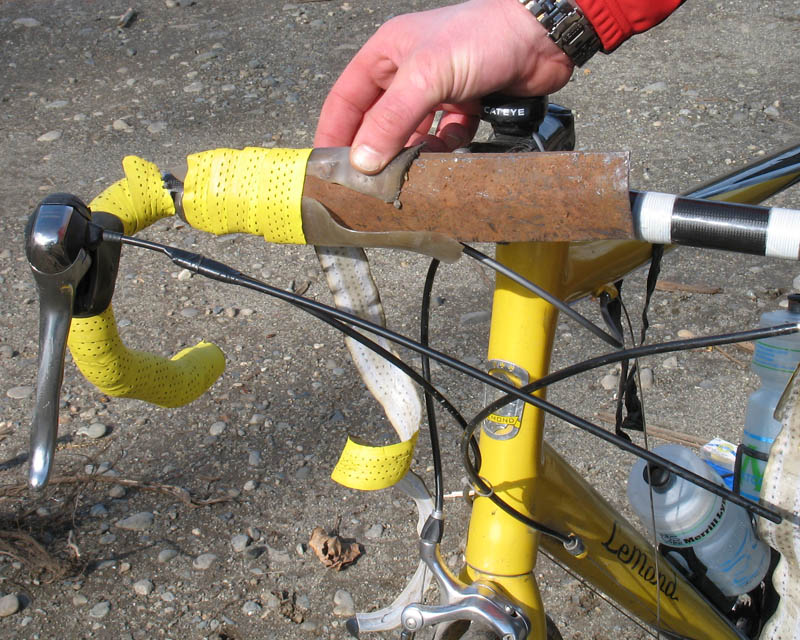
Step 3: We carefully removed the handlebar tape and used it to wrap the splint tightly onto the handlebars. Ryan had gel tape on his handlebars, which we used to cover the sharp edges of the steel plate.
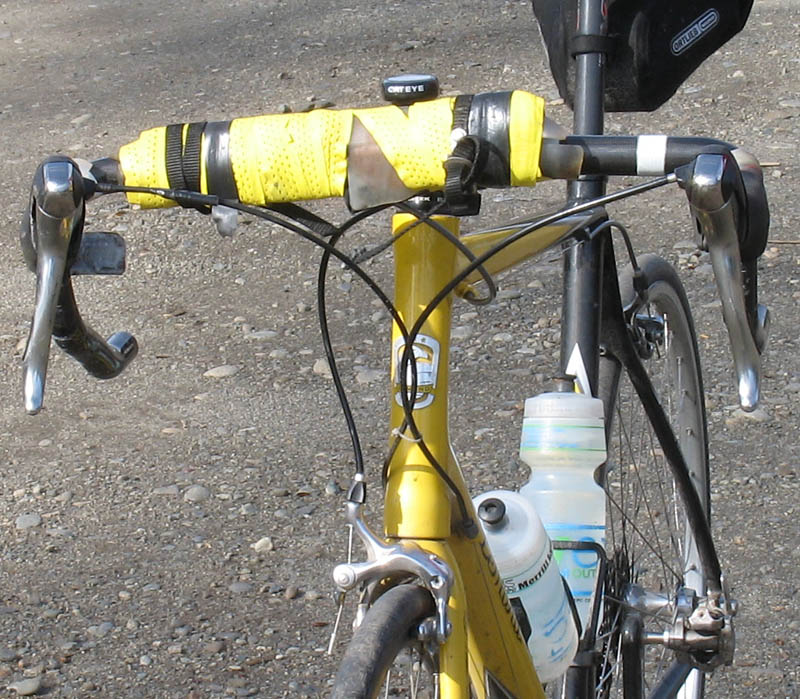
We used two toestraps to secure the splint further. It certainly looked odd, but the bike was ready to ride. We didn’t want to press our luck, so we decided to forego the final, most beautiful leg of our ride, and instead turned back toward Seattle.
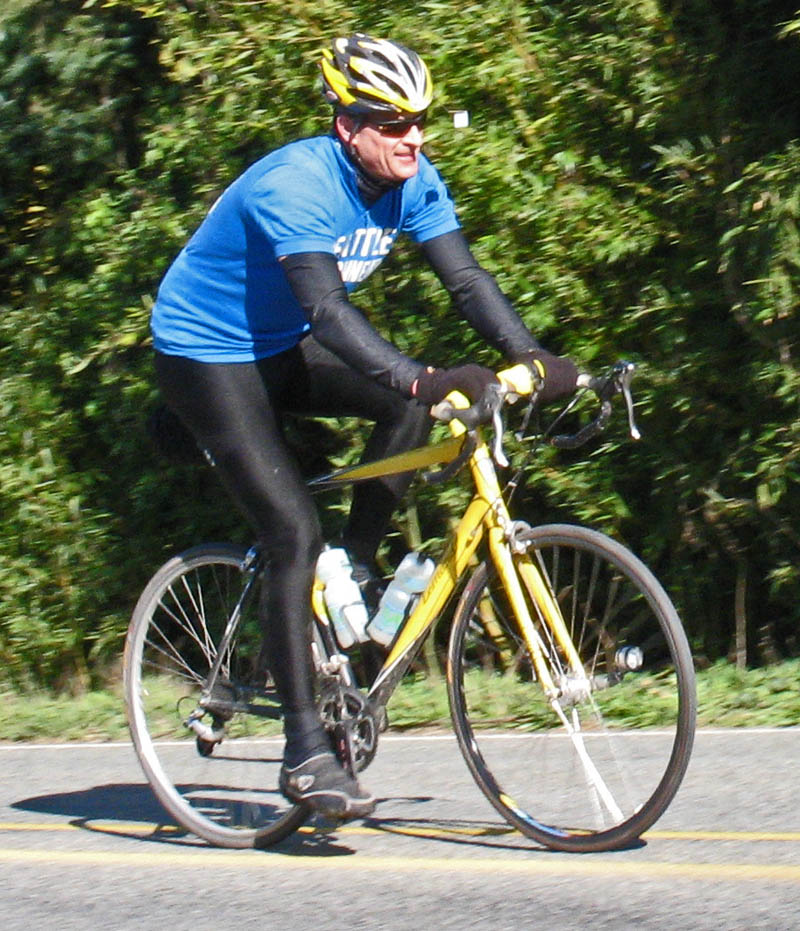
The ride home was uneventful. Ryan still could use his right shift lever with confidence, but wasn’t so confident resting his weight on the hoods or drops. Fortunately, the lever for his front brake was on the intact left end of the handlebars, so his braking was not impaired. Of course, this is only a temporary fix. Ryan replaced the handlebars for his next ride. Use your judgment before riding with similar repairs.


